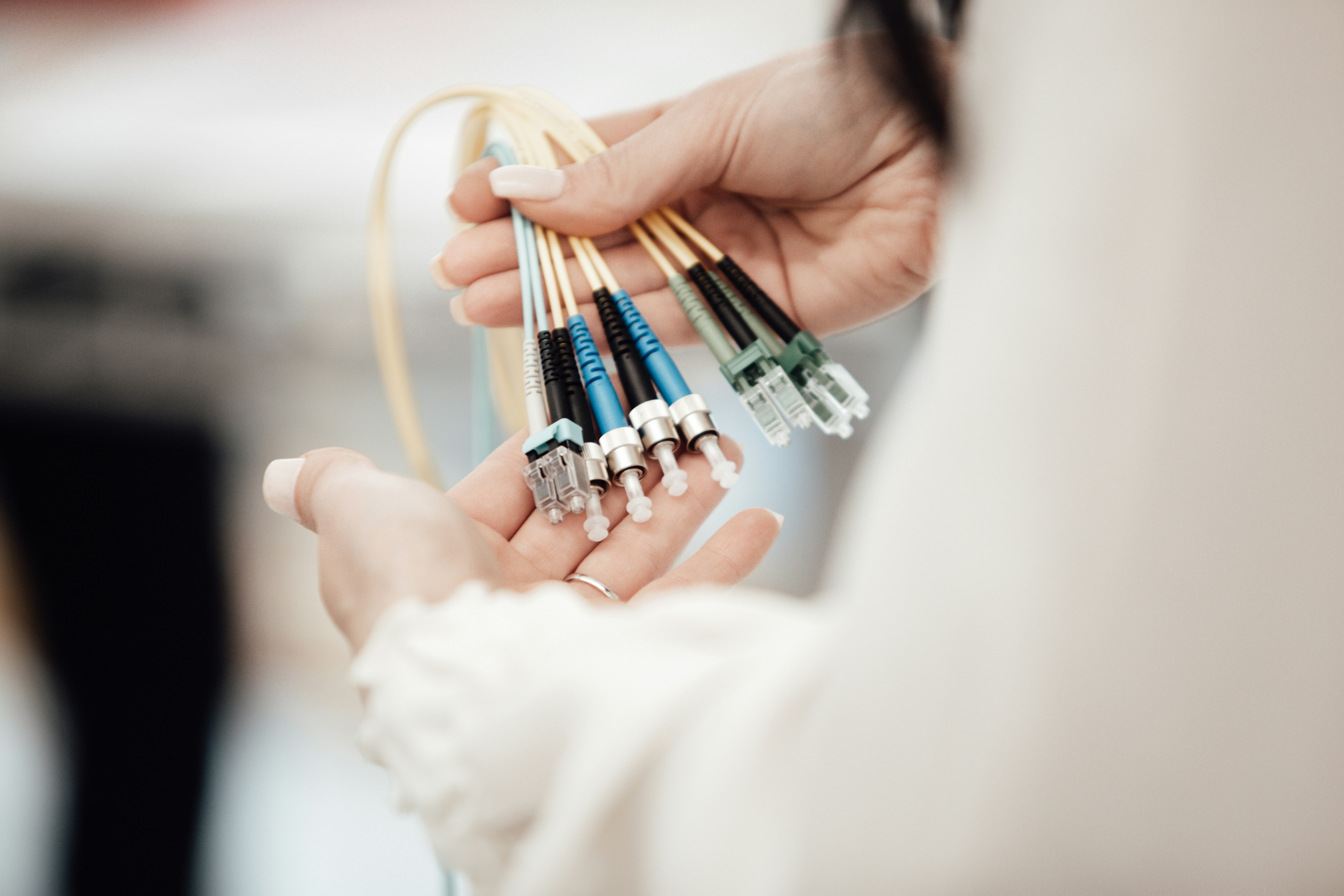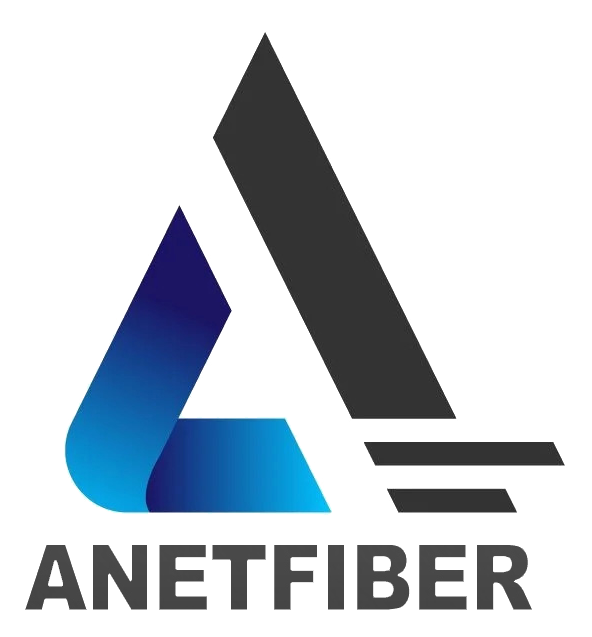5 Essential Fiber Optic Cable Connectors You Should Know

Getting Started with Fiber Optic Cable Connectors
Fiber optic cables have revolutionized the way data is transmitted, offering unparalleled speed and reliability. Fiber Optic technology utilizes thin strands of glass or plastic to transmit data using light signals. This method allows for faster data transmission compared to traditional copper wiring.
Why Fiber Optic Cables?
The speed and reliability advantage
Fiber optic cables have gained popularity due to their exceptional speed and reliability. Unlike traditional copper cables, fiber optics can carry large amounts of data over long distances without signal degradation. The use of light signals enables Fiber Optic cables to transmit data at incredibly high speeds, making them ideal for applications that demand rapid and consistent data transfer.
The Role of Connectors in Fiber Optics
Ensuring seamless data transmission
Connectors play a crucial role in the functionality of Fiber Optic cables. These connectors facilitate the seamless transmission of data by enabling the connection and disconnection of fiber optic cables. They ensure that the optical fibers align precisely, allowing for efficient signal transmission without loss or interference.
LC Connector: The Compact Powerhouse
When it comes to fiber optic technology, the LC connector stands out as a compact powerhouse, offering remarkable efficiency and performance.
Understanding the LC Connector
The design and benefits
The LC connector is known for its small form factor, making it an ideal choice for high-density connections in data centers and telecommunications networks. Its compact size allows for more connectors to be installed in the same amount of space compared to other larger connectors. Additionally, the LC connector offers quick and easy installation due to its push-pull coupling mechanism, reducing installation time and effort.
LC Connector Applications
Where and why it's used
The versatility of the LC connector makes it suitable for various applications across different industries. It is commonly used in environments where space is limited, such as in crowded data centers or networking cabinets. Moreover, its reliable performance makes it a preferred choice for high-speed internet connections, fiber-to-the-home (FTTH) installations, and enterprise networking setups. The LC connector also finds extensive use in telecommunication systems and equipment due to its ability to maintain signal integrity over long distances.
SC Connector: The Reliable Workhorse
As we delve into the realm of fiber optic connectors, the SC connector emerges as a reliable workhorse, known for its robust features and consistent performance.
The Basics of SC Connector
Features and advantages
The SC connector is characterized by its square-shaped body and a push-pull coupling mechanism, which ensures secure connectivity. Its design includes a snap-in locking system that provides stability and ease of use. This connector's robust build makes it resistant to vibrations and ideal for environments where reliability is paramount. Additionally, the SC connector offers low insertion loss and high return loss, contributing to efficient signal transmission without compromising data integrity.
SC Connector in Action
Common uses in the industry
The versatility of the SC connector makes it widely utilized across various industries. It is commonly employed in telecommunications, LAN (Local Area Network) setups, and data center applications due to its ability to maintain signal strength over long distances. Moreover, its durability and stable performance make it suitable for harsh environmental conditions, such as industrial settings where exposure to dust or moisture is a concern. The SC connector also finds extensive use in cable television (CATV) networks and internet service provider (ISP) infrastructure, providing reliable connections for high-speed data transmission.
ST Connector: The Sturdy Veteran
Introduction to ST Connector
The ST connector holds a significant place in the history of fiber optic technology, characterized by its sturdy build and enduring legacy. Originally developed by AT&T, the ST (Straight Tip) connector gained prominence as one of the first types of fiber optic connectors widely used in commercial applications. Its design features a bayonet-style coupling mechanism, providing a secure and reliable connection for fiber optic cables. The ST connector is distinguishable by its cylindrical shape and a keying mechanism that prevents improper insertion.
With its robust construction and proven track record, the ST connector has established itself as a reliable choice for various networking and telecommunications applications. Its long-standing presence in the industry reflects its enduring characteristics that continue to make it relevant in today's rapidly evolving technological landscape.
History and Characteristics
The evolution of the ST connector traces back to the early days of fiber optics, where it played a pivotal role in establishing reliable connections for data transmission. Its durable design and straightforward installation process made it an attractive option for organizations seeking dependable connectivity solutions. The keying mechanism of the ST connector ensures proper alignment during mating, reducing the risk of signal loss or disconnection.
Today, the ST connector remains valued for its ability to withstand environmental challenges, making it suitable for deployment in diverse settings. Its robust housing provides protection against dust, moisture, and mechanical stress, ensuring consistent performance even in demanding conditions. The durability and resilience of the ST connector have solidified its position as a trusted veteran in the realm of fiber optic connectivity.
ST Connector's Role Today
Ongoing relevance and applications
In contemporary networking environments, the ST connector continues to play a vital role across various industries due to its enduring relevance and dependable performance. It is commonly utilized in enterprise networks, backbone cabling systems, and industrial automation setups where reliability is paramount. The ST connector excels in scenarios where environmental factors pose potential challenges to signal integrity, thanks to its robust design that mitigates external influences.
Moreover, the ST connector finds extensive use in military and aerospace applications where ruggedness and stability are essential requirements. Its ability to maintain secure connections under harsh conditions makes it an ideal choice for critical communication infrastructure within these sectors. Additionally, the ST connector remains prevalent in legacy systems where compatibility with existing equipment is crucial, showcasing its adaptability amidst evolving technological standards.
As fiber optic technology continues to advance, the enduring legacy of the ST connector serves as a testament to its reliability and resilience in sustaining seamless data transmission over extended periods. Its continued relevance underscores its significance as a sturdy veteran that continues to meet the demands of modern networking infrastructures.
MTP/MPO Connector: The Future of High-Density Connections
As we look to the future of fiber optic technology, the MTP/MPO connector emerges as a groundbreaking innovation that addresses the growing demand for high-density connections in data centers and telecommunications networks.
Exploring MTP/MPO Connector
Innovation in fiber optics
The MTP/MPO connector represents a significant advancement in fiber optic connectivity, designed to accommodate the increasing need for high-performance, high-density cabling solutions. Unlike traditional connectors, the MTP/MPO connector features a multi-fiber design, allowing multiple fibers to be connected simultaneously within a single interface. This innovative approach streamlines cable management and optimizes space utilization, making it an ideal choice for environments where maximizing connectivity within limited space is essential.
The development of the MTP/MPO connector has revolutionized the deployment of fiber optic infrastructure, offering enhanced flexibility and scalability to meet evolving network requirements. Its ability to support multiple fibers within a single connection interface simplifies installation processes and reduces overall cabling complexity. This innovation paves the way for efficient and cost-effective high-density connectivity solutions that align with the demands of modern networking environments.
MTP/MPO Connector Benefits
Efficiency and scalability
The adoption of MTP/MPO connectors brings forth a myriad of benefits that cater to the evolving needs of high-density network deployments. One notable advantage lies in its capacity to streamline cable management by consolidating multiple fibers into a single connector, reducing clutter and enhancing organization within network enclosures. This streamlined approach not only optimizes physical space but also simplifies maintenance and troubleshooting procedures, contributing to overall operational efficiency.
Moreover, the scalability offered by MTP/MPO connectors proves instrumental in accommodating future expansion requirements without necessitating extensive infrastructure overhauls. As network demands evolve, organizations can seamlessly scale their connectivity solutions by leveraging MTP/MPO connectors, thereby future-proofing their infrastructure investments. This adaptability ensures that networks can readily adjust to increasing bandwidth demands and emerging technologies without facing constraints related to connectivity limitations.
Furthermore, the efficiency gains facilitated by MTP/MPO connectors extend beyond physical space optimization. The streamlined installation processes associated with these connectors result in reduced deployment times and labor costs, making them an attractive choice for organizations seeking agile and cost-effective networking solutions. Additionally, their compatibility with high-speed data transmission technologies positions them as key enablers for next-generation network architectures that prioritize rapid data transfer capabilities.
Wrapping Up: Understanding Fiber Optic Connector Standards
As the demand for high-speed and reliable data transmission continues to grow, the establishment of Fiber Optic connector standards plays a pivotal role in ensuring seamless connectivity and performance across diverse networking environments.
The Importance of Standards
The implementation of Fiber optic connector standards is paramount in guaranteeing compatibility and optimal performance within fiber optic networks. These standards define specific parameters and requirements for connectors, including aspects such as dimensions, tolerances, and performance criteria. By adhering to standardized specifications, organizations can effectively mitigate compatibility issues and maintain consistent signal integrity throughout their network infrastructure. Furthermore, standardized connectors enable interoperability among different equipment and components, fostering a cohesive ecosystem that supports efficient data transmission across various platforms.
Adhering to established Fiber Optic connector standards also facilitates streamlined procurement processes by providing clear guidelines for selecting compatible components. This ensures that organizations can make informed decisions when sourcing connectors, thereby minimizing the risk of incompatibility issues that could disrupt network operations. Additionally, standardized connectors undergo rigorous testing to validate their performance under specified conditions, instilling confidence in their reliability and long-term functionality.
Looking Ahead: The Evolution of Fiber Optic Connectors
As technology continues to advance, the evolution of Fiber Optic connectors remains an ongoing endeavor aimed at addressing emerging trends and technologies within the networking landscape. Future advancements in fiber optic connector standards are poised to introduce enhanced capabilities that cater to evolving network requirements.
One notable trend on the horizon is the integration of advanced materials and manufacturing techniques to further optimize connector performance. This includes the development of connectors with reduced insertion loss and enhanced durability, contributing to improved signal transmission efficiency. Moreover, advancements in connector design are anticipated to prioritize space-saving attributes while maintaining robustness, aligning with the increasing emphasis on high-density connectivity solutions.
Furthermore, future Fiber Optic connector standards are expected to encompass provisions for next-generation network architectures that leverage advanced protocols and transmission technologies. This includes considerations for accommodating higher data rates, increased bandwidth capacities, and evolving industry-specific requirements. As networking paradigms continue to evolve towards cloud-based infrastructures and edge computing applications, standardized connectors will play a crucial role in supporting these transformative developments by enabling seamless connectivity across distributed environments.
In conclusion, understanding Fiber optic connector standards is essential for establishing reliable and future-ready network infrastructures that meet the demands of modern data transmission needs. By embracing standardized specifications and anticipating future trends in connector evolution, organizations can position themselves at the forefront of technological innovation while ensuring robust connectivity solutions for diverse applications.
See Also
Key Installation Methods for Optical Fiber Cable Setup
Understanding 4 Essential Optical Fiber Cable Varieties
Top 5 Best Practices for Fiber Optic Testing and Maintenance


